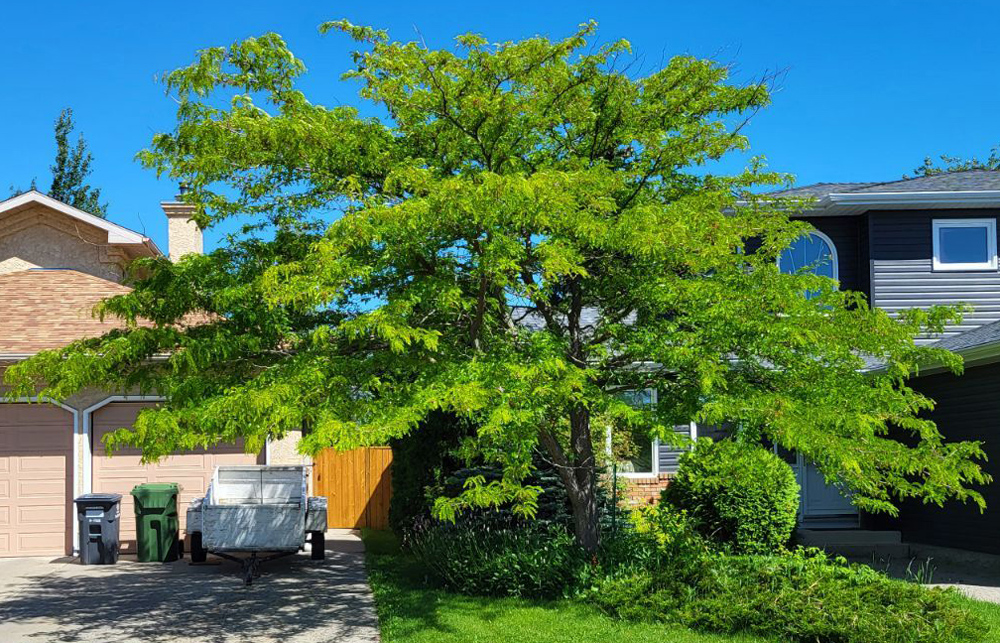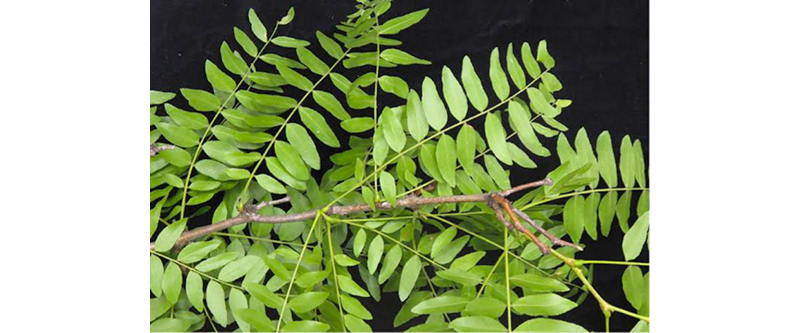 Honey Locust
Honey Locust
937 Emmeline Terrace

The Honey Locust Honey Gleditsia triacanthos L. is a deciduous tree in the family Fabaceae, native to central North America where it is mostly found in the moist soil of river valleys. Honey locust trees are highly adaptable to different environments. It is a fast-growing tree and can reach a height of 100 feet. It has a life span of 125 years. The doubly compound leaves are alternate and dark green in colour. Large, red thorns are often found on the branches and trunk of wild trees. The thorns typically have 3 points, but may have more, especially those on the trunk. The bark is dark gray and black with deep fissures that form large "plates"of bark on mature trees. The strongly scented flowers appear in late spring. Each cluster is a raceme 3–7 centimeters long with many tiny greenish yellow to greenish-white flowers. The trees are polygamous-dioecious: many trees have only pollen producing flowers or seed producing flowers (strictly dioecious), but some will have both types of flowers in separate clusters, though usually one type will predominate. Long, twisted seed pods form in late summer, and turn from green to dark reddish brown as they mature. The size of these pods is highly variable and give off a strong sweet smell when ripen and fall to the ground in fall.
![]() Alternate location: Downey Road — on north boundary of parking lot opposite the entrance to Boffin Gardens.
Alternate location: Downey Road — on north boundary of parking lot opposite the entrance to Boffin Gardens.
